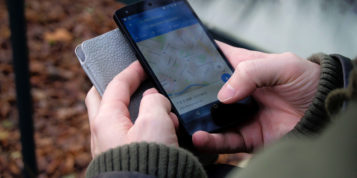2017 has been a big year for augmented reality (AR). AR was tipped for greatness at the beginning of the year and, as one of the key technological trends of the past 12 months, it’s safe to say it didn’t disappoint.
Along with virtual reality (VR), AR has been one of the technology industry’s key disruptors. For example, combined revenue was predicted to reach $471 million in 2017, according to IDC, representing a 262 per cent increase over the $130 million spent in 2016.
Furthermore, AR was so popular within the industry that Gartner has included the immersive technology in its list of the Top 10 Strategic Technology Trends for 2018, sitting alongside the likes of artificial intelligence (AI), blockchain and the Internet of Things (IoT).
And rather than slowing down, AR is continuing to gain momentum, suggesting that the technology is set for an even bigger year in 2018.
So, what kind of developments can we expect to see over the upcoming year? Which industries will be disrupted? And which companies are set to stand out from a rapidly-growing crowd?
The rise of retail
Although AR has so far been predominantly linked to the gaming sector, many other industries are quickly starting to realise the potential benefits, one of which is retail.
More and more consumers – having accessed AR through the likes of Snapchat and Pokemon Go – are now expecting their preferred outlets to provide similar augmented reality-based experiences.
And some high-profile retailers have already jumped on board the AR train. Scandinavian furniture brand Ikea, for example, has created a mobile app called Ikea Place which enables users to place virtual furniture into their home to provide a realistic portrayal of how items will look once they have been assembled.
Then there’s home improvement retailers Lowe’s, which has created an app that works as a virtual tape measure so users can create real-life measurements of walls and furniture via their smartphone’s camera.
These applications are just the beginning. As AR continues to evolve throughout 2018, we expect to see the broader adoption of the technology among retailers as a commercial tool to drive footfall towards their stores.
Enabling customer engagement
Linked to the rise of AR in retail will be the emergence of new and exciting mobile apps that consumers can use to engage with businesses on the go, an area which we expect to grow significantly in 2018.
With smartphones continuing to play an ever-increasing role in our daily lives, there is a vast pool of mobile AR potential for businesses to tap into. Indeed, AR/VR M&A adviser Digi-Capital believes that mobile augmented reality has the potential to be the primary driver behind a $108 billion VR/AR industry by 2021, with AR taking the lion’s share of the market.
With that in mind, businesses across a wide variety of industries will seek to innovate in this area over the next 12 months, in order to create engaging and immersive experiences for their customers to enjoy.
This will enable them to increase their levels of customer engagement and differentiate themselves from their competitors.
Clash of the titans
With all the hype around augmented reality, it should come as no surprise to hear that two of the world’s biggest technology companies are making some serious noise around the technology’s potential.
Apple and Google have both well and truly thrown their hats into the AR ring, with their seemingly limitless resources set to turn augmented reality into the next big battleground in 2018.
For example, Apple has made its intentions clear with the $30million acquisition of Vrvana, a Canadian manufacturer of AR headsets that is most well-known for its tethered ‘Totem’ headset, while Google recently launched ARCore – a baked-in augmented reality platform for Android developers.
Whatever happens in the industry over the next 12 months, these two titans are going to be out in front, jostling for the lead of the future AR market.
WaveOptics
But it’s not just about the big boys that are leading the way. There are plenty of smaller firms that are well positioned to fly under the radar and take some of the shine away from the industry’s most high-profile players in 2018.
One such example is WaveOptics, a UK-based start-up that develops its own immersive AR technology using hologram physics and photonic crystals, rather than conventional augmented reality projection.
It’s waveguide software is aimed at both the consumer and enterprise markets and can be tailored for specific applications across multiple form factors. Videos on the company’s website show practical examples of the technology being used by a cyclist to map routes and track performance, as well as by a forklift driver in a giant warehouse.
These are just two possible applications for the technology and WaveOptics’ early promise has recently resulted in a £12m Series B funding round. The future is certainly bright for this innovative AR start-up and, if it continues on the same upward trajectory, 2018 could be a breakthrough year.
ARcommerce
We’ve already touched on the expected rise of AR in retail and ecommerce companies should be taking note, because a new form of business – ARcommerce – is predicted to peak and make waves through the retail sector in 2018.
With customers starting to be able to digitally interact with items before they buy them and get the in-store shopping experience from wherever they are, it’s inevitable that more consumers will soon start demanding augmented reality experience.
AR has the potential to revolutionise the shopping experience as we know it and retailers simply have to be prepared for an ARcommerce future that will alter how and where they sell products.
By offering a useful AR experience, retailers can put the power in the hands of their customers and significantly differentiate themselves from the competition.



